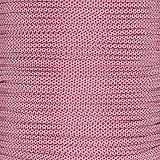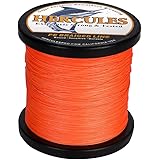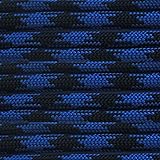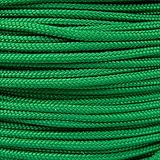Have you ever contemplated the ingenuity required for long-term survival in past centuries, particularly when facing the challenges of sustained expeditions and harsh environments? The video above expertly introduces pemmican, a historical superfood that epitomized efficiency and caloric density for early North American inhabitants and explorers. This remarkable foodstuff, often composed primarily of bison meat and suet, represented a pinnacle of traditional preservation techniques.
The Historical Significance of Pemmican: A True Survival Food
Historically, pemmican was not merely a convenient meal; it was a fundamental component of life for various indigenous groups, including the Cree and Métis peoples, and later became indispensable for European fur traders and Arctic explorers. Its development allowed for extended journeys across vast, often barren landscapes where fresh food sources were scarce or unreliable. Consequently, the ability to carry concentrated sustenance, which would not spoil easily, was critically important for survival. Imagine if a modern backpacker had to rely solely on freshly hunted game; the logistical challenges would be insurmountable. Pemmican effectively solved this perennial problem through meticulous preparation and storage methods.
Crafting the Ultimate Survival Ration: The Drying Process
The creation of pemmican begins with the careful preparation of meat, most commonly from bison due to their abundance in historical contexts. As was mentioned in the video, the meat is meticulously cut into very thin slices, ideally across the grain, to facilitate rapid and thorough dehydration. This precise slicing ensures that the muscle fibers are exposed maximally, thus allowing moisture to be extracted with greater ease. The sun drying method, a natural and effective technique, was traditionally employed, requiring days of consistent sunlight and air circulation to achieve the desired dryness. It is imperative that virtually all moisture content is removed, as any remaining water would significantly accelerate spoilage, compromising the pemmican’s impressive shelf life.
Achieving this level of dryness transforms the meat into a hard, brittle substance that can then be processed further. Without this crucial step, the foundational integrity of the pemmican cannot be maintained over extended periods, making it unsuitable for long-term storage or expeditionary use. Furthermore, thorough drying concentrates the meat’s nutrients and flavor, contributing to the overall caloric density of the final product. The attention to detail during this initial phase directly influences the quality and longevity of the preserved food, which was a matter of life and death in many historical scenarios.
Incorporating Suet: The Preservation and Caloric Powerhouse
Following the drying process, the pulverized meat fibers are combined with rendered animal fat, specifically suet, which is the hard, white fat found around the kidneys and loins of cattle, sheep, or, in this historical context, bison. The video accurately highlights the crucial ratio involved, typically a 50/50 mixture or a 2 to 1 ratio of meat to suet, depending on desired texture and availability. This addition of rendered fat serves multiple vital purposes, transforming dried meat into a truly effective and shelf-stable survival food. Consequently, the suet acts as a natural sealant, encapsulating each meat fiber and preventing both air and moisture from initiating spoilage, thus extending the food’s viability significantly.
Moreover, the incorporation of suet drastically increases the caloric density of pemmican, making it an incredibly efficient energy source. Imagine consuming a small portion of this compact food and feeling sustained for hours during strenuous physical activity. A single pound of pemmican can provide approximately 2,000 to 2,500 calories, a staggering amount for its weight and volume, making it superior to many modern trail foods in terms of nutrient per ounce. This high fat content not only contributes essential calories but also provides warmth in cold climates and aids in the absorption of fat-soluble vitamins, rendering it a complete and balanced survival ration.
Beyond the Basics: Nutritional and Practical Advantages of Pemmican
Pemmican’s reputation as the ultimate survival food is well-deserved, stemming from its exceptional nutritional profile and practical advantages. Unlike simple dried meat, the addition of suet transforms it into a calorically dense power bar, capable of sustaining individuals through extreme physical exertion and prolonged periods without fresh food. Furthermore, its comprehensive nutritional composition, including protein, fat, and often micronutrients from berries (if added), ensures that the body receives what it needs for optimal function. Consequently, it was the go-to sustenance for those facing challenging conditions, from trappers navigating the wilderness to soldiers on arduous campaigns.
Enhanced Shelf Life and Storage Solutions
The remarkable shelf life of pemmican is largely attributed to the meticulous removal of moisture and the protective barrier provided by the rendered suet. When properly prepared and stored, pemmican can last for years, or even decades, without refrigeration. This incredible longevity makes it an ideal staple for emergency preparedness kits, off-grid living, or any scenario where access to perishable foods is compromised. The video accurately notes that the prepared pemmican is typically placed in a leather bag, which offers a robust and traditional method of storage that protects against physical damage and further environmental exposure. Modern equivalents might include vacuum-sealed bags, but the principle of airtight, moisture-free containment remains paramount.
The compact nature of pemmican also significantly contributes to its utility in survival situations. A large quantity of high-energy food can be transported with relative ease, occupying minimal space compared to an equivalent caloric intake of fresh provisions. Imagine embarking on a journey where every ounce matters, and yet you require substantial energy to power through demanding terrains; pemmican fulfills this need perfectly. This efficiency in both preservation and portability cemented its status as an invaluable resource throughout American history and beyond, ensuring sustained vitality when traditional food sources were unavailable.
Modern Relevance and Applications of Pemmican
While the video details the 18th-century methods, the principles behind pemmican remain highly relevant for contemporary survivalists, bushcraft enthusiasts, and those interested in historical culinary practices. Modern adaptations often involve utilizing commercially available lean ground beef or venison, dried in a dehydrator, and combining it with rendered tallow or coconut oil for the fat component. This approach allows individuals to replicate the essential qualities of traditional pemmican using readily accessible ingredients and equipment. Consequently, the core concept of combining dried, pulverized meat with fat for long-term, high-energy sustenance continues to be a powerful strategy.
The enduring appeal of pemmican lies in its simplicity, nutritional completeness, and unparalleled shelf stability, making it an exceptional survival food. Its creation represents a profound understanding of food preservation that allowed societies to thrive in challenging conditions for centuries. Truly, the art of making pemmican is a testament to human ingenuity in adapting to environmental constraints, ensuring that energy and sustenance were consistently available even in the most demanding circumstances.











